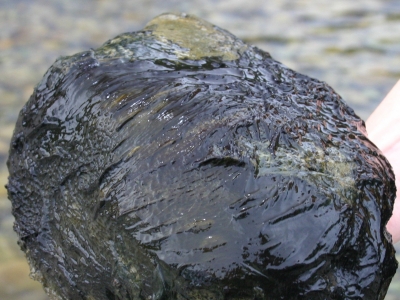During summer, look out for blue-green algae

Greater Wellington and Regional Public Health want people to take care around the region’s rivers over the festive season due to the risk from potentially toxic blue-green algae (cyanobacteria).
Moderate growth of blue-green algae was observed in the Waipoua River at Colombo Road in Masterton last week (12 to 16 December) and river users, particularly those with dogs, should avoid contact with algae in this part of the river.
Weekly monitoring has so far not identified blue-green algae at levels that pose a risk in the Hutt and Waikanae rivers. However, with no significant rainfall predicted over the next couple of weeks algal growth could increase rapidly.
Local councils will be posting signs at key access points along these rivers to warn people of the risk. If algal growth increases Greater Wellington will post warnings at www.gw.govt.nz/warnings
“This is typically the time of year when there’s increased growth of the algae because river flows and levels are usually lower and there’s less frequent rain to flush the algae away,” Greater Wellington Senior Environmental Scientist Summer Greenfield says.
Blue-green algae, which are naturally present in many New Zealand waters, grow in dark brown or black coloured mats on rocks in the river bed. The toxins produced by blue-green algae can be fatal to livestock and to dogs. Dogs are particularly susceptible to exposure because they like to scavenge near water. Contact with blue-green algae toxins may also cause vomiting, diarrhoea and skin irritations in humans.
More information about toxic algae, including pictures and current warnings, can be found at www.gw.govt.nz/toxic-algae. If you see any exposed or easily accessible algal mats, contact Greater Wellington on P 04 384 5708, or an environmental health officer at your local council.
